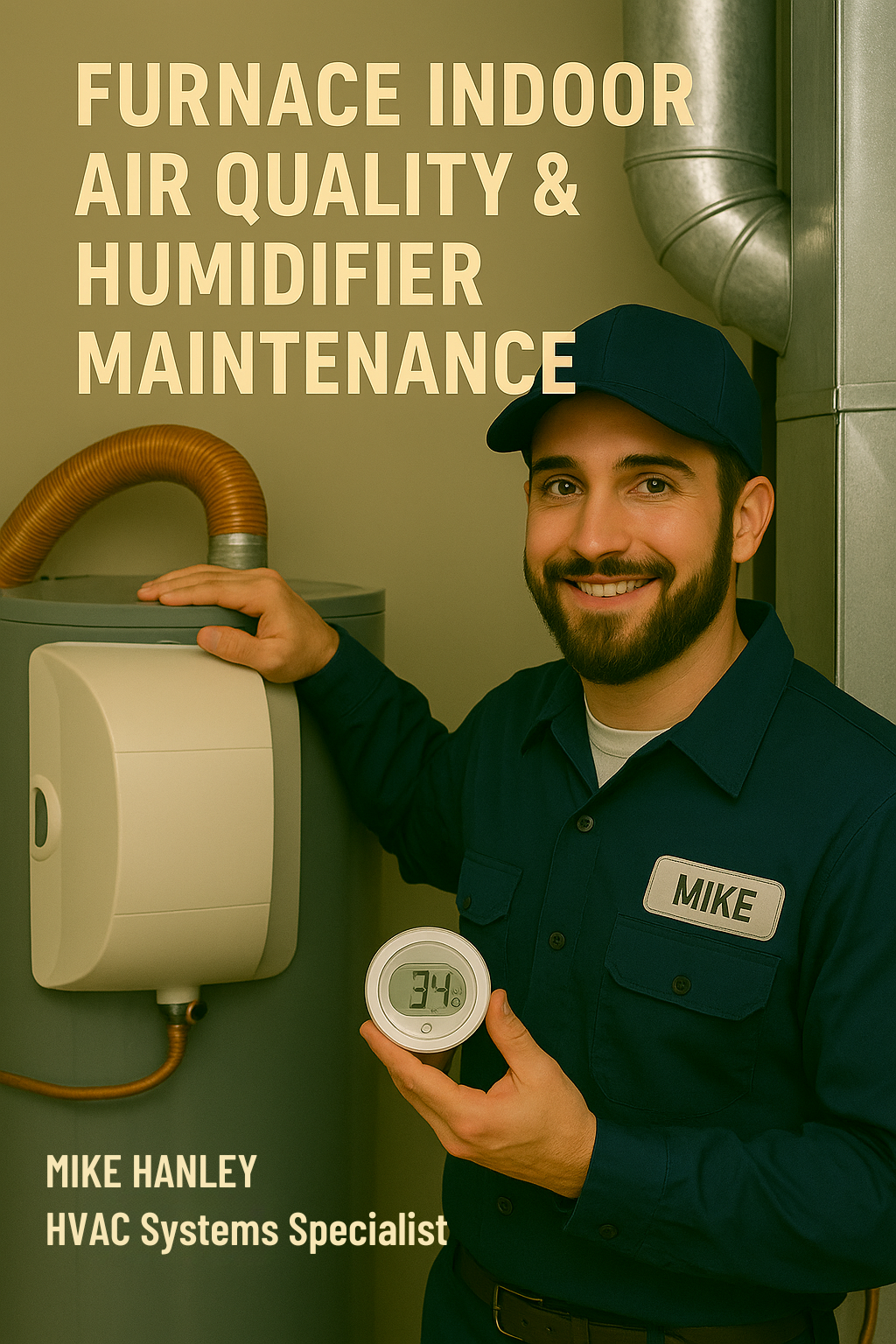📘 Table of Contents
🏠 Introduction to Air Quality and Furnace Health
The air you breathe indoors doesn’t just affect your comfort—it directly impacts how well your furnace performs. Poor indoor air quality can make your system work harder, dry out your living space, and circulate dust and allergens through your home.
The EPA warns that indoor air is often 2 to 5 times more polluted than the air outside. Combined with the dry conditions of winter, this can lead to stress on your furnace and your respiratory system.
🛠 How Humidifiers Support Furnace Performance
Humidity plays a bigger role in your comfort and furnace efficiency than you might think. Dry indoor air forces your heating system to work harder to keep you warm.
Here’s how adding a humidifier helps:
-
Improves Heat Retention: Moist air holds warmth better, helping your furnace run less often.
-
Protects Home Materials: Keeps wood furniture and flooring from cracking.
-
Reduces Dust Circulation: Helps settle airborne particles instead of letting them recirculate.
-
Eases Breathing: Maintains relative humidity (RH) in the 30–50% range—ideal for respiratory health.
🔧 Common Humidifier Types for Furnace Systems:
-
Bypass Humidifiers: Rely on furnace airflow to add moisture.
-
Fan-Powered Units: Include a built-in fan for added output, great for medium-to-large homes.
-
Steam Humidifiers: Deliver high moisture output and precise control—typically used in premium systems.
Explore humidifiers and accessories at The Furnace Outlet.
📊 Practical Maintenance for Humidifiers and IAQ Devices
To work effectively, humidifiers and indoor air quality (IAQ) devices need regular upkeep. Here's what every homeowner should be doing:
🧼 1. Replace Evaporator Pads
-
When: Once per heating season
-
Why: Mineral buildup can block airflow or reduce moisture output
-
Where to Get Them: Evaporator pads and furnace filters
🧽 2. Clean Humidifier Components
-
Use white vinegar or diluted bleach to remove scale and bacteria.
-
Clean the water reservoir, float valve, and fan blades (if applicable).
-
Follow your manufacturer’s instructions for disassembly and reassembly.
🌡 3. Monitor Relative Humidity
-
Use a hygrometer to keep RH between 30–50%.
-
Watch for condensation on windows—it may mean the humidity is too high.
🧃 4. Replace IAQ Filters
-
Look for MERV 8–13 rated filters for most homes.
-
Change them every 3 months or sooner depending on dust levels.
-
Pair with UV air purifiers for even better filtration. See our IAQ solutions for more options.
➡️ Also check out our Air Handler products to ensure air moves efficiently through your home.
✅ Key Takeaways and Next Steps
Keeping your air clean and your humidity balanced doesn’t have to be complicated. A few small habits can make a big difference in both your comfort and your furnace’s longevity.
-
Humidifiers improve comfort, preserve your furnace, and enhance air quality.
-
Clean and replace evaporator pads and filters every season.
-
Use a hygrometer to keep your home’s humidity in check.
➡️ Next: Oil Furnace Maintenance Guide Every Homeowner Needs
🔙 Back to Main Topic: How to Maintain Your Furnace for Long-Term Use
❓ FAQ
Q: Do I really need a humidifier with my furnace?
A: If your home gets dry during the winter—causing nosebleeds, dry skin, or static shocks—then yes, a humidifier can help improve comfort and reduce furnace stress.
Q: Can I clean my humidifier with vinegar?
A: Absolutely. Vinegar is safe and effective for removing scale from most parts. Just avoid using it on metal parts without checking the manufacturer’s guidelines.
Q: What MERV rating should I look for in IAQ filters?
A: A rating of MERV 8–13 works well for most homes. Higher ratings filter better but can restrict airflow in older HVAC systems. Always consult your system’s specifications.
Q: How do I know if my home’s air is too dry?
A: Symptoms include dry throat, itchy skin, static electricity, or wood cracking. A digital hygrometer can give you exact RH levels for better control.
Q: Is over-humidification a problem?
A: Yes. Too much moisture can cause window condensation, mold growth, and even damage to walls or insulation. That’s why regular monitoring with a hygrometer is essential.







